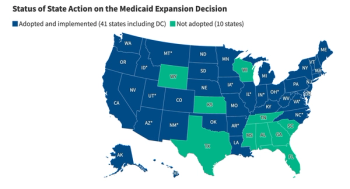
Stakeholders agree FFS must diminish
Ten recent policy reports show a consensus on reducing the role of fee-for-service pay structures, says Paul Ginsburg
Fee-for-service (FFS) is technically not going away, says Paul Ginsburg, PhD, economist and faculty at the University of Southern California. His recent cross-section
But it’s really the incentives overarching FFS that are changing.
“All reform payment approaches are built on top of fee-for-service,” Ginsburg says.
“There are incentives for ACOs to reduce cost per-enrollee, but basically it’s being paid fee-for-service as before but with shared savings and sometimes shared losses.”
FFS is still the foundation, but there is an attempt to broaden incentives through shared risk, he says. Reforms aim to change volume-based pay to value-based pay, and to encourage more efficiency in the system, even though there is a lack of readiness to achieve those goals today.
Ginsburg prepared the analysis for the university’s school of public policy and the
“All the groups were trying to think broadly rather than what’s in it for them,” he says. “They were not going to negotiate away things in advance, and that’s why they were not vey concrete in their strategies.”
For example, the Pacific Business Group on Health convened a panel of large employers and set an ambitious goal of moving 75% of Medicare payment to non-FFS arrangements by 2020. Other stakeholders set similar targets but didn’t outline the pathway to achieving them.
However, Ginsburg says the shared overall vision of the stakeholders to lower costs will be valuable to the policy process to develop more concrete steps for executing the vision.
Revenue reduction
Providers might be concerned that any broad cost controls will equal less revenue under payment reform. But Ginsburg says today’s reform reminds him of the 1980s when the Diagnosis Related Group (DRG) system that classifies hospital cases for reimbursement was created. He says the hospitals endorsed DRGs because it gave them more options to handle the cost pressures from Medicare.
“They had the opportunity to make money, rather than just avoid losing money,” he says. “Some of that is happening here. Providers see Medicare cuts for the rest of decade, and to a degree, they can have a wider range of options to constrain costs and might come out better.”
Ginsburg says, for example, some hospitals are embracing ACO agreements with private insurers and see them as a relief from the pressure to find capital and build more capacity.
“Obviously, revenue will have to fall, and hopefully providers can get their expenses to fall faster,” he says.
10 groups with cost containment strategies
Source: University of Southern California Schaeffer Center for Health Policy & Economics, April 2014
Julie Miller is the former editor-in-chief of Managed Healthcare Executive.
Newsletter
Get the latest industry news, event updates, and more from Managed healthcare Executive.





















































